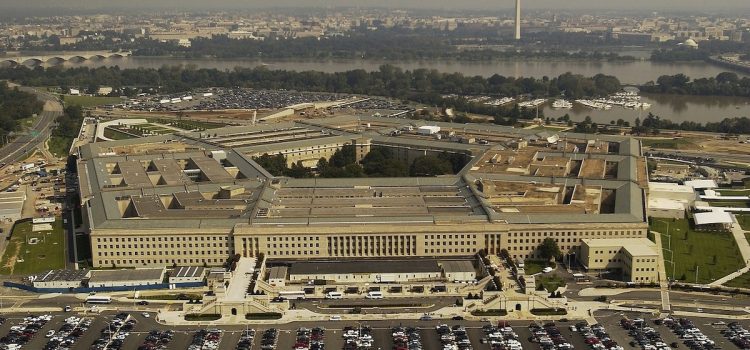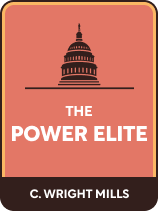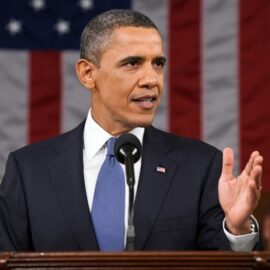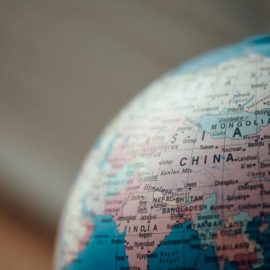

This article is an excerpt from the Shortform book guide to "The Power Elite" by C. Wright Mills. Shortform has the world's best summaries and analyses of books you should be reading.
Like this article? Sign up for a free trial here.
What significant transformation did America’s military undergo in the 20th century? How does that transformation affect society as a whole?
Sociologist C. Wright Mills exposes how the power elite came to control a majority of wealth and influence in America. The military is one of the institutions in which power has been centralized. Mills asserts that this happened in a subtle process over several years.
Read more to learn how the military elite became one-third of America’s power structure.
America’s Military Elite
After the American Civil War, political and technological developments allowed businessmen, military generals, and politicians to exercise their influence more broadly. Those who took advantage of these developments gained enough power to shape their respective institutions, outcompete their rivals, and form a new national class of elites. Corporations, the military, and civilian government are the three main institutions where Mills believes the power elite developed.
Regarding the military elite, Mills explains that the United States has been in violent conflict for almost all of its history. However, the nature of who fights and why they fight changed drastically in the 20th century. He says this process happened in three steps: using temporary militias, creating the professional officer corps, and going to war indefinitely.
Step 1: Using Temporary Militias
Mills explains that, from America’s founding until the 20th century, the military was relatively decentralized and separate from civilian political power. Local militias made up of citizens rather than professional soldiers did a majority of America’s fighting, usually on a small scale. A larger, permanent military bureaucracy wasn’t really necessary—when conflict came, citizens would organize into local militias, fight toward a specific political or economic end (often taking land from American Indians), and then disband.
Even during bigger conflicts like the American Civil War, fighters (including officers) were mostly citizens organized into small, decentralized militias. Mills explains that the average general of the late 19th century wasn’t educated, saw plenty of combat firsthand, and rose through the ranks based on performance in battle or seniority as a soldier. While some of these generals transitioned into political life later on, it was always separate from their military careers—they advocated for their specific parties and civilian government interests rather than for the military as an institution.
(Shortform note: The term “militia” in American history is relatively broad, referring to two very different kinds of military organizations. First are “organized militias,” or the militaries of individual states—the Florida National Guard, for example. While organized militias are made up of civilian volunteers or conscripts instead of professional soldiers, they do tend to have formal military training and command structures. These organized militias fought the majority of small-scale conflicts in 18th and 19th-century American history. Disorganized militias, on the other hand, can refer to federal, state, or local militias made up of any able-bodied citizens. They have little to no training or structure and, usually, function only as impromptu defense forces.)
Step 2: Creating the Professional Officer Corps
The next step of American military centralization began at the turn of the 20th century, explains Mills. At this time, the US military started replacing decentralized militias with a professional officer corps. This system created very different kinds of officers: men who were highly educated in military beliefs and values, who often saw little to no combat and who were deliberately kept separate from civilian life. These officers were promoted, not for winning battles or fighting well, but instead for following strict hierarchies and chains of command over the course of their careers.
During World War I, the United States vastly expanded the military as an emergency wartime measure—one that included close coordination among the civilian government, the military, and private industry. This was only temporary, however, and the government dismantled much of its military after the end of the conflict. This showed that, while the military was increasingly centralized and hierarchical, it was still a tool of civilian government.
(Shortform note: Though Mills says Congress creating the professional officer corps at the turn of the 20th century was a turning point in military centralization, some scholars argue it was actually just the culmination of a century-long internal process. Following America’s poor performance in the War of 1812, many officers and bureaucrats coordinated to “professionalize” the military despite having little support from Congress. Professionalization meant standardizing and regulating military training and practices—which meant a central authority determined more of what the military did. From this perspective, Congress establishing a professional officer corps was less a sudden centralizing shift and more the formalization of an existing process.)
Step 3: Going to War Indefinitely
The largest growth in military power and influence started a few decades later with World War II. Much like in World War I, the military, civilian government, and private industry worked together during World War II. However, US involvement in the war was much larger, meaning there was more money involved in the war economy and more integration necessary to coordinate the war effort. Most significantly, Mills argues that this collaboration didn’t end after World War II. Instead of dismantling the expanded military and returning to a peacetime economy, the United States entered the Cold War—a conflict with no clear end that allowed the country to maintain its expanded war economy and wartime integration indefinitely.
(Shortform note: Collaboration during World War II extended beyond just the elites—it also included leaders and members of labor unions. Formally, unions throughout the country agreed not to strike for the duration of the war; even the most militant left-wing unions refrained from striking out of solidarity with the Soviet Union’s war effort against the Nazis. “Wildcat” strikes—strikes against the wishes of union leadership—still occurred during the war, though never for long. When the war ended, so too did the no-strike pledge, leading to an enormous wave of strikes in 1945 and 1946. However, the Taft-Hartley Act of 1947 and purges of labor leaders greatly weakened American labor power, allowing elites to continue collaborating with far less organized opposition.)
Permanent wartime integration allows top generals to gain influence over corporations and politicians alike. Politicians can use the strict hierarchy and obedience of the military to efficiently accomplish their political goals and bypass the democratic political process, meaning they invest more money and power into the hands of the military. Then, generals use the inflated military budget to pour massive amounts of money into private corporations that do business with the military—becoming the largest customer of these companies and gaining a great deal of influence over them.
(Shortform note: While large-scale collaboration among corporations, politicians, and the military exists to this day, Mills’s claims about the influence of specific generals are far more specific to his time. In the 1950s, generals like Douglas MacArthur and Dwight D. Eisenhower were beloved and popular figures for their roles in World War II. They leveraged this public support to try and gain power—MacArthur consistently challenged the authority of US president Harry S Truman until Truman eventually fired him, a massively unpopular move. Eisenhower, on the other hand, won the 1952 presidential election in a landslide, and military spending spiked during his time in office.)

———End of Preview———
Like what you just read? Read the rest of the world's best book summary and analysis of C. Wright Mills's "The Power Elite" at Shortform.
Here's what you'll find in our full The Power Elite summary:
- How a group of corporate elite controls America's politics and economics
- How the elite exploit America's institutions for their own benefit
- A look at the dangers that arise when citizens feel powerless






